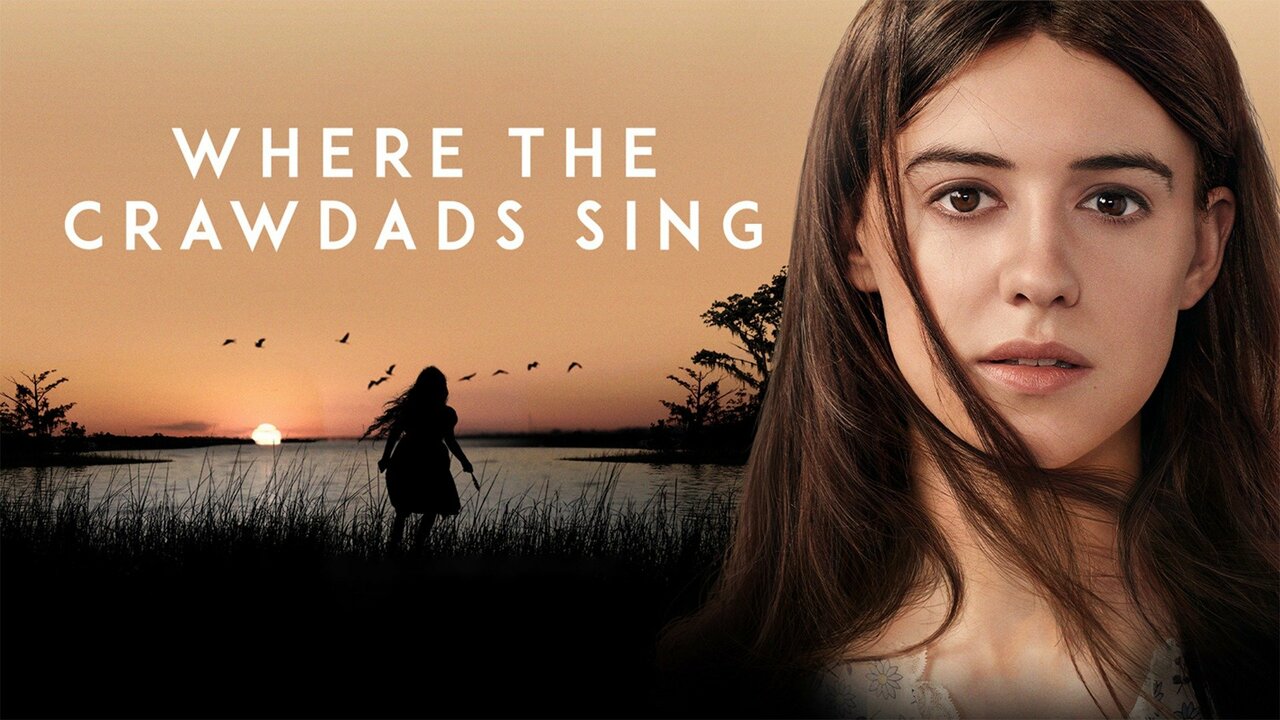Where the Crawdads Sing (2022)
- fanmovies
- November 18, 2024

Movie Review: Where the Crawdads Sing (2022)
Where the Crawdads Sing, based on the bestselling novel by Delia Owens, is a sweeping and evocative tale of mystery, survival, and love set against the backdrop of the lush, isolated marshlands of North Carolina. Directed by Olivia Newman, the film blends romance, suspense, and a deep connection to nature, crafting a poignant and atmospheric story about an abandoned girl who grows up alone in the wild.
Plot and Storyline: The film follows the life of Kya Clark (Daisy Edgar-Jones), nicknamed the “Marsh Girl” by the locals in her small town, Barkley Cove. Abandoned by her family as a child, Kya learns to survive on her own, forging a deep connection with the marsh and its wildlife. As she grows up, she becomes a mysterious figure in the town, the subject of gossip and suspicion. Her life takes a dramatic turn when the local popular boy, Chase Andrews (Harris Dickinson), is found dead, and Kya is accused of his murder.
The plot alternates between two timelines: one following Kya’s childhood and survival in the marsh, and the other centered on the investigation of Chase’s death. As the film unfolds, Kya’s complicated relationships with the people in the town — particularly with her love interest, Tate Walker (Taylor John Smith) — are explored, as well as her struggle to overcome the trauma of abandonment. At its core, the film is a slow-burn mystery with emotional depth, touching on themes of loneliness, betrayal, love, and the healing power of nature.
Character Performances: Daisy Edgar-Jones’s portrayal of Kya is the emotional heart of the film. She beautifully captures the character’s resilience, vulnerability, and quiet strength. Kya’s loneliness is palpable, and Edgar-Jones does an excellent job of conveying her growing complexity as she navigates love, loss, and the harsh judgments of the townspeople. Her performance grounds the film, making Kya a character the audience can deeply empathize with.
The supporting cast also delivers strong performances, particularly Taylor John Smith as Tate, Kya’s childhood friend and eventual love interest. His portrayal is gentle and kind, a sharp contrast to Harris Dickinson’s portrayal of the arrogant and manipulative Chase. Dickinson effectively brings a sense of danger to his character, making the investigation into Chase’s death all the more intriguing.
Setting and Cinematic Style: The marshlands of North Carolina are beautifully depicted in the film, with sweeping shots of the swamp, tall grasses, and wildlife. The natural world is more than just a backdrop; it is almost a character in itself, symbolizing both Kya’s isolation and her intimate connection with the world around her. The cinematography emphasizes the wild beauty of the marsh, creating an atmosphere that is both peaceful and foreboding.
The pacing of the film is deliberate, allowing the quiet moments in the marsh to resonate, while also building tension around the mystery of Chase’s death. The contrast between Kya’s solitary life and the bustling town serves to highlight her estrangement, and the film’s visuals capture this sense of duality.
Themes and Exploration: At its heart, Where the Crawdads Sing explores the power of isolation and the human need for connection. Kya’s emotional journey is one of self-discovery, learning to trust others and find belonging despite her past. The film also delves into themes of abandonment, the trauma it causes, and the ways people cope with it. Kya’s survival in the marsh is not just physical but emotional — a means of protecting herself from the pain of her past.
The romance between Kya and Tate serves as both a source of healing and heartache. Their relationship is tender and earnest, though complicated by the scars Kya carries. The film also touches on the ways in which people can be judged and misunderstood, particularly women who step outside social expectations, as seen in the town’s treatment of Kya as the “Marsh Girl.”
The murder mystery aspect of the story adds intrigue, but it also serves as a catalyst for revealing the deeper layers of Kya’s life and the people around her. The truth about what happened to Chase becomes symbolic of Kya’s own journey toward justice and healing.
Conclusion: Where the Crawdads Sing is a beautifully filmed adaptation that successfully captures the emotional weight and atmosphere of the novel. With a standout performance from Daisy Edgar-Jones, the film weaves together mystery, romance, and drama in a way that keeps viewers engaged. While it doesn’t quite match the emotional depth of the book, the film still provides a heartfelt and compelling story of survival, love, and redemption.
For fans of the novel or anyone looking for a touching and suspenseful drama, Where the Crawdads Sing offers a gripping experience. The film’s rich setting, strong performances, and exploration of timeless themes make it a story worth watching — and reflecting upon long after the credits roll.











